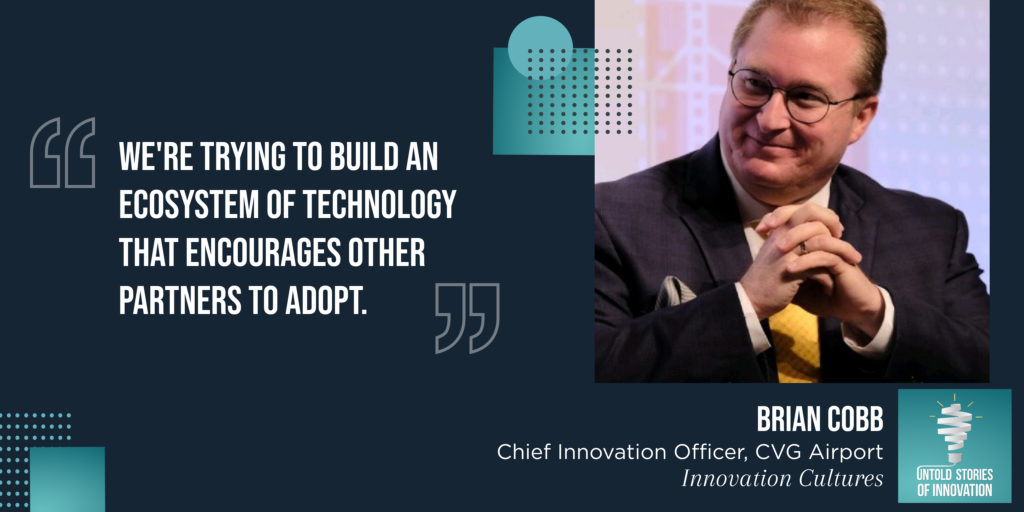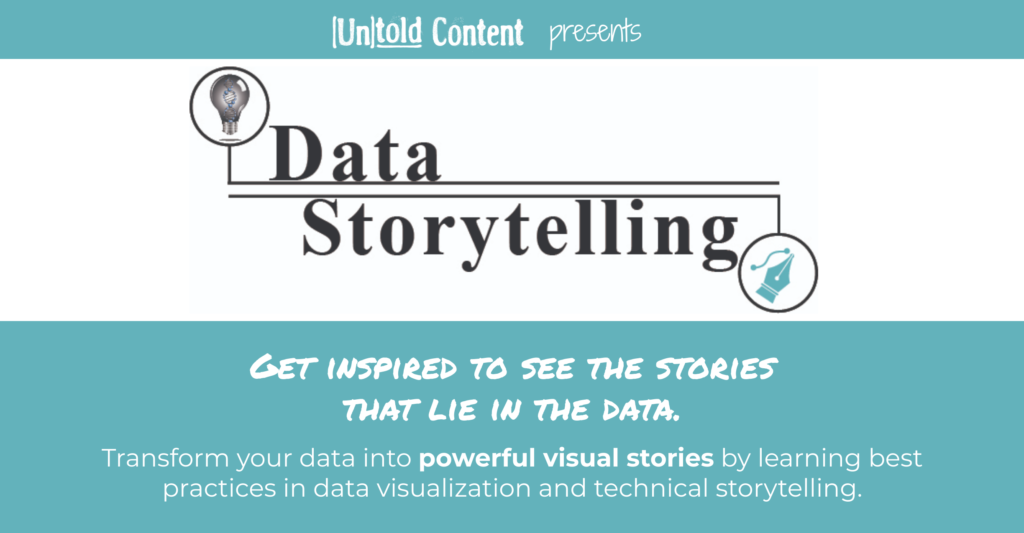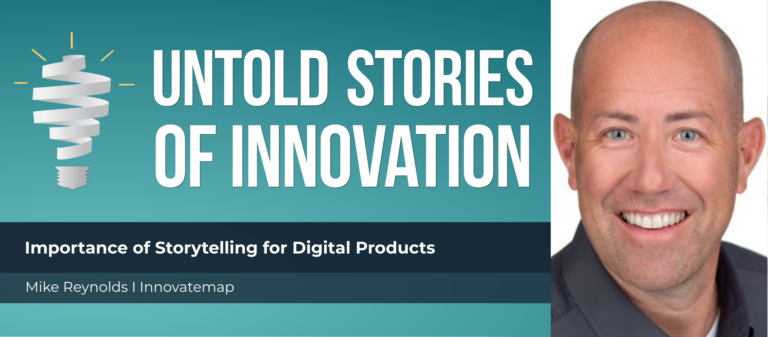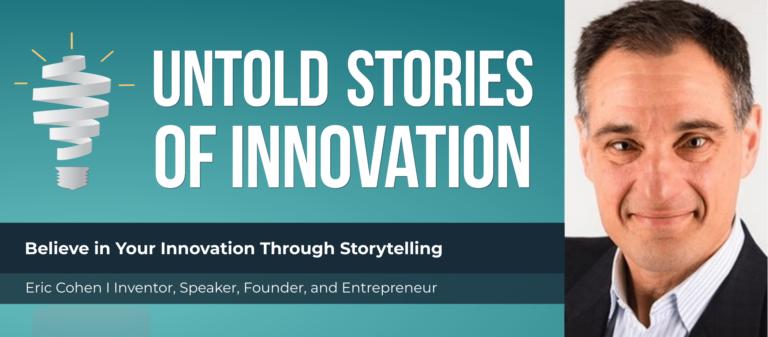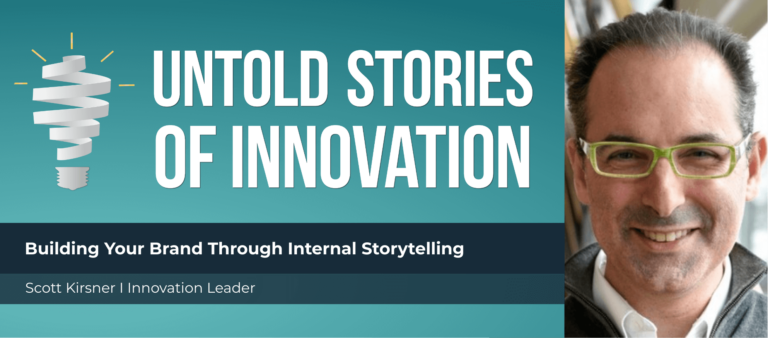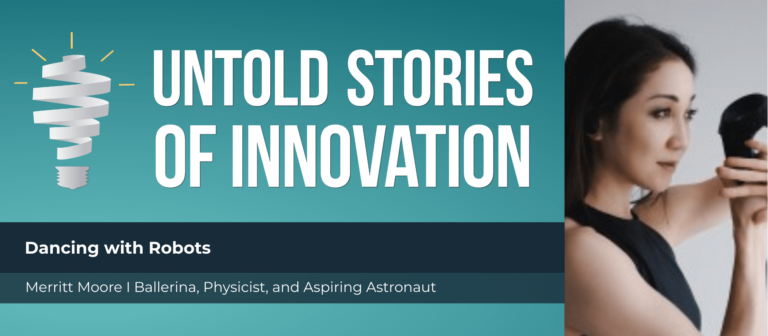Innovation Cultures with Brian Cobb
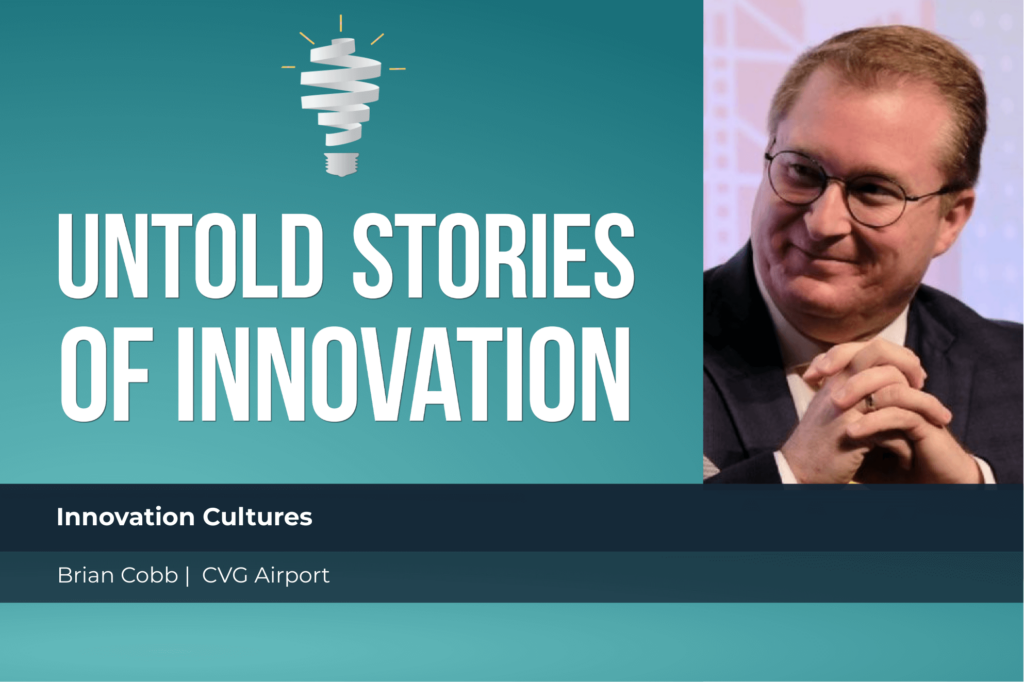
Innovation Cultures - Untold Stories of Innovation
“We need to have talent behind everything that we do. We need to understand what’s happening, what’s coming at us, and then finding that talent that just understands the nature of the business, not just internally but externally, across party lines, if you will. And then ultimately, how do we make a difference in not only the global economy, but who we are as humans?” —Brian Cobb, chief innovation officer at CVG airport
From today’s episode you’ll learn:
Why do stories matter to the innovation process? What values can be instilled in innovators who share stories? How do innovation leaders inspire creators to tell and share their success and failure stories?
Brian Cobb, chief innovation officer at Cincinnati / Northern Kentucky International Airport (CVG), partners with startups, internal stakeholders, and division leaders to make problems visible and discover data-driven solutions. By both measuring and sharing their travelers’ stories, CVG has developed industry-changing tech. Innovation comes from many places, but according to Brian, paying close attention to user experience is always a good place to start. In fact, he mentions that much of the innovation coming out of CVG was inspired by a video on this very subject. Even though it was made years ago, and by University of Cincinnati students, the ideas within sparked innovation in a big way.

Brian Cobb was appointed Chief Innovation Officer of the Cincinnati/Northern Kentucky International Airport (CVG) in January, 2018. Brian joined CVG as its first Vice President of Customer Experience in July, 2010. He oversees the Airport’s team of professionals working in the fields of Customer Relations and Terminal Services, Graphics and Signage, Housekeeping and Custodial Contracts, Information Technology, and Innovation programming. His role includes strategic competitive and experience advantages through effective facilitation and talent and technology acquisitions. The surrounding Region’s status relies heavily upon CVG Airport’s transportation advocacy, economic excellence and service superiority.
This episode, Innovation Cultures is powered by data storytelling training from Untold Content and Data+Science. Transform your data into powerful visual stories by learning best practices in data visualization and technical storytelling. Whether you’re a PowerBI or a Tableau person—or just want to better communicate your data—this workshop will inspire you to see the stories that lie in the data. Learn more at untoldcontent.com/data-storytelling-training.
Katie [00:00:00] Our guest this week is Brian Cobb. He is the Chief Innovation Officer of the Cincinnati Northern Kentucky International Airport, also known as CVG. Brian, I’m so thrilled to have you on the podcast. You are doing so much work in this hub and I think just on a global scale in terms of moving aviation forward. So thank you for being here.
Brian [00:00:20] Well, thanks for having me.
Katie [00:00:22] I want to start by asking you where your personal story of innovation began.
Brian [00:00:27] Sure. It’s actually back in about 2011. I was invited to look at a panel of UC students, and UC at the time was working with a Live Well Collaborative, and Boeing Aerospace had actually supported this group of students. The problem statement was very simple. It was: tell me what the future of aviation looks like. And that was it. So the ask was for some of us in aviation to come down and take a look at what they had to offer. And again, these are young minds, 18 to 20 range.
Katie [00:01:02] Yeah.
Brian [00:01:03] What does the future look like to them? And of course, the beauty of that structure is that there is no structure.
Katie [00:01:10] Of course.
Brian [00:01:11] They’re free to think out and just build anything that comes to mind. And what really started to fascinate me is as soon as I hit the door, they replicated the airport experience. The very first thing I was given was some of us remember the slap bracelets, which is just kind of a metal band that wraps around your arm as soon as you slap it against your wrist.
Katie [00:01:32] Yeah, sure.
Brian [00:01:32] So sure enough, you slap it and then you see what today where we consider a QR code. And this was way before QR codes were really cool. So immediately the students were like, congratulations. This is now your watch for the day. And it will identify you and identify your entire track throughout the airport experience. So you have a group of students in 2011 that were already using wearables before wearables were.
Katie [00:01:58] Yes. To create a personalized experience too for the function that it would become.
Brian [00:02:04] Completely. So that was totally like fuel for the fire. OK. What’s next? What do you have next? And ultimately they developed a video that is just mind-blowing that I’ve kept that video. I still reference it today. I share it with colleagues around the globe on this is what the future of air travel absolutely could look like because they were using technologies, even though that they were relatively new and emerging, they were using technology in a tangible way that absolutely make a change in our air travel experience. And I’ve chased after every one of those components that they’ve displayed up to the aircraft. So I do have my limits.
Katie [00:02:45] So we’ll link to that video if you can share it, we’ll link to it in the show now so that people can take a look and see what the future looked like from the young adult’s perspective. It’s incredible.
Brian [00:02:56] Yeah, absolutely. And there was really more telling, too. Not only was it the technology, but I also learned that technology does not get born without the talent behind it. So just from the get go. Absolutely. We need to have talent behind everything that we do. We need to understand what’s happening, what’s coming at us, and then finding that talent that just understands the nature of the business, not just internally but externally, across party lines, if you will. And then ultimately, [00:03:26]how do we make a difference in not only the global economy, but who we are as humans?
Katie [00:03:33] It’s incredible to see how you have claimed an identity for CVG around innovation and then, like you mentioned, built the talent around that mission. You have an internal team devoted to the innovative work and can you speak to that a little bit? And then, of course, I have questions for you about how you’ve got external partnerships, too, because that’s incredibly impressive.
Brian [00:03:55] Oh, sure. So we had to start internally first. Our first success not only taking from that UC example, but we knew, too, that your experience at the airport is really determined by your experience standing in queue lines. Anyone standing in lines as not having.
Katie [00:04:12] Yes, indeed.
Brian [00:04:13] So we really need to keep people moving fast. Unfortunately, in this day and age and I do say unfortunately, we have to also consider this term called soft target, which is essentially if you have a group of people standing around, that becomes a soft target for some nefarious individuals that want to do harm. So we really have to be thinking not only about the experience, but what are we always doing on the safety and security front?
Katie [00:04:42] That’s a beautiful point.
Brian [00:04:42] Right. So we have to be on the front end of that. So very much we looked at technology for our security checkpoint because as your experience goes at the security checkpoint, it will go for the entire airport experience. So naturally, the TSA is challenged at times. I would say more often than not, they get an unfair representation of what really the global security responsibility is. Sometimes we have to kind of take a step back and appreciate what it is that they’re doing as opposed to lashing out at the individual that is really just trying to do their job and do their mission.
Katie [00:05:22] Sure, yeah.
Brian [00:05:23] But at the same rate, we have to provide tools that really help them in their daily environment. So our use of Bluetooth and Wi-Fi sensors, there are nodes all around a security checkpoint that are sniffing for devices that have either Bluetooth or Wi-Fi or both that are on and once they’re on. We can’t identify who you are, but absolutely, we create a blip that we can see where you start to enter the checkpoint and where you exit the checkpoint and you subtract those two and that’s your average wait time. So immediately we were able to start gathering data over the course of time that could predict ultimately on what your wait time going to be today on a Tuesday versus tomorrow on a Wednesday. And from a brand commodity perspective, working with the TSA that shared, “Hey, you guys are building a widget. You have responsibilities for consistency in your product.” Because I really don’t know of any successful company that has been successful without producing a quality product. So you shouldn’t have to wait 10 minutes on a Tuesday and 30 minutes on a Thursday. It really should be a consistent 15 to 20 minutes at all time. So that technology was the first iteration of CVG really kind of jumping into this innovation space that that technology was originally designed for retail and in Europe.
Katie [00:06:46] Interesting.
Brian [00:06:46] So with my partner Stephen Saunders, we kind of flew under the radar and really quietly started building this array of tech that started to really kind of drive us into we’re onto something here. Not only are we on to something for CVG, but we’re on to elements that could really be disruptive for aviation.
Katie [00:07:09] Yeah, the entire industry. It’s applicable. So I think there’s an element here of [00:07:16]you’re not just thinking about how to help CVG stand out among competitors. You’re also thinking of applicability across the industry. So how can you take a technology like that and get other airports onboard and create, therefore, a more consistent product, get more feedback and more data? And have you found that feedback loop with TSA has been difficult or has it gone well? Have you learned a lot in the process?
Brian [00:07:47] We have learned a ton. Just from that project alone and you saw me shaking my head before, I’m sure the folks can’t, but yes, emphatically. Yes, yes, yes. We are seeing success on all fronts, just starting with the TSA project alone. We are now every bit of four plus years really working with Washington to try to improve that products and take it across the nation. So to be sitting here at CVG and to create a tool that just now is finally getting attention at the Washington level, it’s very rewarding on one hand. Little frustrating on the other hand.
Katie [00:08:27] Sure, sure.
Brian [00:08:27] But it very much goes to the term fortitude, I suppose, which is just don’t give up, we’re doing the right thing. Yes. Credit to our local TSA team. They are some of the finest in the industry. We have one of the best relationships hands down across the country. It was absolutely our local TSA friends that sat down with us and said, “Hey, absolutely willing to partner as far as we’re permitted to go from the Washington level. But if you have tangible data that tells us how we’re performing, we’re all in, we’re all ears and how we can do better.” And absolutely, I think it doesn’t take much to reflect back, not just a couple of years ago, the news was all over Chicago and Seattle and Denver for two, three, four hour waits. CVG had none of that. And why? Because we had it six months earlier. We dealt with our pain, but we took that data at that time of the circumstances and laid it out for our TSA friends and said “isn’t there a way that we could be more efficient with the staffing? And here’s the data that says so.”.
Katie [00:09:32] It’s incredible.
Brian [00:09:33] And thankfully, they were willing to change their schedule. Literally, I can absolutely say our wait times went away overnight. So we went from 40 minute waits all the way down to ten minute waits and we have not looked back.
Katie [00:09:46] So am I understanding correctly that part of the problem was it wasn’t visible? The problem itself wasn’t necessarily visible. We didn’t have data to show those patterns and trends. And therefore, there wasn’t, you know, the opportunity to create a solution even. The innovation was let’s make this problem visible and then the other half of the challenge was getting the right partner, TSA, to participate and engage, and they were willing to, thank goodness. So therefore, the solution was able to get enacted.
Brian [00:10:18] Yeah, right. On all accounts. If you don’t measure something, you can never really improve it. So it all comes back to that God almighty data. And what are we doing with it? So you’ll see a consistent theme with any of the technology that we’re using: data, data, data, data, data. So we’re collecting the data, analyzing the data, and then how do we make the product? Not that you see today, but make the product of the future, because that’s the one that’s going to change your experience in the airport environment.
Katie [00:10:47] Yes.
Brian [00:10:47] So just alone on that TSA scenario, we took the data shared with them. And really it was not about adding staff. It was just more efficiency, efficient use of the staff.
Katie [00:10:59] Changing the schedules.
Brian [00:11:00] Exactly. So most airports across the country were clamoring for “We need more people. We need more people.” That wasn’t the case at all. And many of our comments, we were kind of the lone airport, if you will, that was speaking to media saying it’s not about adding staff. It’s about being more efficient with the people that we have. So, again, it’s that classic how do we use data? How do we find, to your point, how do we find healthy relationships that are willing to share and sit down at the table that says, let’s analyze this, let’s look at it and let’s try something different, because obviously what we’re doing today is not necessarily working to build our widget.
Katie [00:11:38] Yes. So how did you, you know, kind of to dove one more level deep into this particular example? Did you use certain? Did you find yourself using certain storytelling techniques or relationship building techniques to get your TSA friends to buy in and to hear what you had to say and be interested in this information in the first place?
Brian [00:12:01] Yeah, totally. And that is very much part of the script. So there’s a story element to innovation that is always what is your problem statement. And it’s not just a one liner credit to Boeing for working with the UC students that I was sharing before. But in our circumstance, it’s really what’s the concern and what are we trying to chase after and what’s the story behind it? Interestingly enough, when we go back to really that 2014, even perhaps 2012, when we first solve a challenge, some of our fans will remember that we actually combined all three of our buildings into one into one main terminal. So suddenly it went from just a Delta terminal to a multi carrier terminal. So it’s a combination of airlines and TSA that were really responsible for managing the checkpoint queue. Anything that happens before that document checker at TSA, that’s really the airline airport responsibility. Anything after is TSA’s responsibility.
Katie [00:13:02] Gotcha.
Brian [00:13:03] So unfortunately, in that circumstances and no fault to anyone, anyone’s situation, you kind of get finger-pointing of, well, who mismanaged what? We don’t have time for finger pointing.
Katie [00:13:14] Yeah. Yeah.
Brian [00:13:15] And at that time in our history, it was kind of bleak and not necessarily good circumstances across the front page of the newspaper. So we really had to work hard to regain the faith, the trust of our local consumer, our friends, families and neighbors. So from that perspective, it didn’t take much from that storytelling aspect to stitch a story together using social media content.
Katie [00:13:39] Interesting.
Brian [00:13:39] Just how bad were we being called out on Twitter and Facebook.
Katie [00:13:45] For wait times.
Brian [00:13:46] Absolutely. Yeah. And people don’t hesitate. You know, as soon as something goes bad.
Katie [00:13:51] Yeah. It’s just nobody likes going to security already. So add a long wait to it and you get t some pain.
Brian [00:13:58] Right. And along with that comes perception differences. So your perception of five minutes is probably a little bit different than mine.
Katie [00:14:05] Sure.
Brian [00:14:06] And we knew from our really kind of camera based security perspective that a tweet would come across and someone would say, I’ve been in the security checkpoint for over an hour and we would reach out to that person, my idea, and ask them, “are you willing to share the description of what you were wearing so we can go back and really try to figure out what was happening?”
Katie [00:14:30] Fascinating. Did people say yes?
Brian [00:14:30] They did.
Katie [00:14:31] Wow.
Brian [00:14:32] Hands down. Absolutely.
Katie [00:14:33] Why do you think they said yes to that?
Brian [00:14:35] Because I would say first and foremost, they were just shocked that anyone responded to them.
Katie [00:14:40] Cared. Yes. Yes, exactly. Someone expressed a problem and you’re looking to help solve it.
Brian [00:14:46] And then very much the next iteration was not only did I not expect someone would answer, but for an airport to like ask? That’s pretty impressive, right? Especially when I frankly thought it was TSA.
Katie [00:15:00] Good point, yeah. From a consumer’s perspective, it’s all probably a little bit fuzzy as to who’s the airport? Who’s the airline? Who is TSA? That all sort of seems like one team probably for most for the average traveler.
Brian [00:15:13] So very much that’s where I’ve encouraged our entire team to really kind of take this ombudsmen approach. We can’t shrug our shoulders and say, well, that’s not really our deal. We are the airport. We absolutely have influence. So if we don’t directly control it, we can influence the outcome. So we have to sit down with our business partners like TSA, like the airlines, and really take a stronger position on behalf of our friends, families and neighbors on we care. We absolutely care about our brand. We care about our image, and we have to do better going forward.
Katie [00:15:46] And so you found internal buy in came from being able to share stories from actual travelers as they were expressing their frustrations on social media. And then you’re able to sort of use the technology at the time, which were cameras to tell that story well. And it sounds like that was really helpful. And in encouraging your other internal stakeholders like TSA or the airlines to care and to be willing to have that meeting and have those, you know, solution conversations.
Brian [00:16:15] Yeah, spot on, because that came at a time in our culture where a brand was not necessarily understood.
Brian [00:16:24] And do airports typically have a brand? And they don’t. Really, airports across the U.S. View themselves as utilities. We’re here. People have to use us. Well anywhere else in the U.S., there are five additional competing airports right on top of CVG. So we’re all familiar with them. And unfortunately, we had lost quite a bit of leisure traffic for the most part to those outlying airports. Then as the recession was really hitting hard that even the major businesses could not necessarily afford to pay the highest price tickets, which we were unfortunately known for. And they also flocked to those outlying airports. So after the bottom fell out, if you will. We recognized. Wait a minute. We have to create a brand.
Brian [00:17:16] And that brand has to be built around not only inexpensive airfares, which, by the way, the airport has no control over what the airlines set as far as air fares. But we do control the cost of operating at the airport. OK. And they weren’t terribly out of line. Just perspective wise, they didn’t look competitive. So we had to make it a competitive airport, really kind of reinvented ourselves who we were. We were no longer one dominant hub airline airport. We were no longer the business person’s airport.
Katie [00:17:47] Yeah.
Brian [00:17:47] We’re an airport for all. So as we were really working through that again and we kind of go back to that storytelling of, OK, how are we doing against the brand, image or reputation? Look at our social. And as the social hate is still coming, it was a hard reflection of, OK. Rinse and repeat. Rinse and repeat. We have got to do better. And really refining not only that message, but also cultural inside storytelling of this is what we’re working towards. We’ll get there. It’s going to take some time. But this is what the brand is about.
Katie [00:18:24] Wow. Absolutely. That makes so much sense. And you know, my company, Untold Content, is headquartered here in Cincinnati and proudly part of the #StartupCincy ecosystem. One of the things that I’ve loved about the brand of CVG and how it’s grown and emerged is you’ve really put innovation at the tip of your tongue. So you’ve especially in your role, you have thought about how do we make, how do we communicate that our airport is for all and that we are committed to experience personalization and making that the best that it can be. And as part of that, you’ve really immersed in the startup community, not just in Cincinnati, but around the world. And so could you speak to your approach to why you think startups are part of the story of the airport?
Brian [00:19:21] Sure. So it really in my circumstance, when it came to startups, I kind of deviated from my original plan and I went to be a mentor at Cintrifuse. And I just needed to learn a little bit about what it was and what innovation was and kind of emerging tech.
Katie [00:19:39] And for people who don’t know about Cintrifuse. It’s one of the major Midwestern hubs of innovation. It’s a public private partnership located on Vine Street in downtown Cincinnati, and it partners large corporates with startup technologies and venture capitalists in order to fuel innovation and economic growth in the Cincinnati region and beyond, and it’s really a leader in that across the Midwest.
Brian [00:20:05] Absolutely.
Katie [00:20:06] OK. To pick back up.
Brian [00:20:08] So, yeah. So I started out as a mentor thinking that I audacious as I was, I could help some startup companies.
Katie [00:20:16] Sure. Thank you for doing that by the way.
Brian [00:20:19] Right. At least I thought that was the plan. Until, yeah, I got teamed up with Sam. Sam taught me more about, frankly, the agility, the abilities of businesses, a different mindset. How the millennial thinks. I learned far more from Sam than I could have ever taught him. So that alone just was kind of a shock and awe to me while we he was very appreciative of what I had to share with him nonetheless. I kind of walked away with wow. I think I was the one the mentee in this relationship. Exactly. So that’s just kind of added the spark. So I took that knowledge back. I sat with my colleague Steven. And really? Hey, I think this Cintrifuse thing has a few things going on that could really again, we could bring into our environment and we could trial them because I think as a an airport, we could actually be a laboratory. We’re a living, breathing entity, a thing. And of course, now nine million people, 15000 badge holders. So that isn’t perfect, the ecosystem for trialing product in some form or fashion. So the conversation that I had with Steven is, OK. Let’s kind of quietly fly beneath the radar pun intended, and we’ll just kind of like slip in the Cintrifuse and listen to some pitches and see if we shouldn’t engage. We opted out of making ourselves noticeable. Just quietly sat in the corner. And after we would leave and we were impressed by particular pitches, we would pick up the phone and call those individuals. And invariably the startup community is very small. So word got out that we were engaging startups and that worked in our favor. So immediately we had multiple meetings a week.
Katie [00:22:10] A cool strategy, it sounds like.
Brian [00:22:13] Absolutely. Yeah. And really it truly came down to we’re just interested in the lab and what was happening prior to that. And still a lot to this day is that there are a lot of consolidating companies that will come to an airport or an entity like ours that says we have a portfolio of startups and we would like to select this one, this woman, this one. I don’t want that relationship. I’m not interested. That’s a middle person relationship. I want to sit down with the inventor, or the startup team, and talk about what is your product and cannot play in aviation based on what I know. So I don’t have to be a subject matter expert on the tech. I just need to figure out what’s the dot that I can connect to aviation that will play well either inside the airport for air travel purposes or somewhere on the airport from a campus perspective and just really come of that city and a city running a city. And that’s where the relationships have just taken off dramatically. Every one of our startups have gotten that with very rare exceptions. I would say on an exceptional basis, only two that come to mind so far, and one, frankly, was on the West Coast and another one was in originally in the Cincinnati area that moved to the West Coast. So there is some of that West Coast inflow.
Katie [00:23:34] Sure.
Brian [00:23:35] And fortunately, it’s like, are you really ready for show or are you ready for scale? And if you get that West Coast mentality, then let’s be careful, because I don’t know that the relationship is going to be healthy for us. I say that because if you see what’s happening in the valley today, the valley is just crushing the small startup companies. So it’s become the usual six suspects, the Amazons, the Googles, the Apples.
Katie [00:24:03] Their acquisitions and internal disruption.
Brian [00:24:07] Right. Startup companies really can’t have a say in the valley. So they’re looking for a new location. And I would beat that drum. And frankly, we have been beating that drum that says, take a look at Critifuse. Take a look at the northern Kentucky, the Cincinnati area. How well startups are doing. The economics of where we live. And tell me that there’s not a better equation, because the beauty of all of that is if you want to start your operation here, by the way, we’re an airport. We offer nonstop flights so we can get anywhere. East Coast, West Coast. But from a base of operation of affordability, you know, the living experience. Why not start here in the Midwest?
Katie [00:24:49] Well, let’s pause for a second to and think about all of the incredible things that had to happen in order for us and this region’s story to be able to make those points. 1. You as as leaders of our airport, are willing to look at it as a laboratory, that in itself is incredible. I think when you look at industries like healthcare, aviation, high reliability industries, innovation can feel very scary. It’s incredibly necessary. But because of the concerns around safety and always playing the very first roll risk can feel like those cultures sometimes can be more risk averse. So that’s one part of the phenomenon. And the other part is that you are then willing to open that up and provide an invitation for disruptors and new tech companies and take to come in and work alongside you and even open that door to hearing those pitches. Those two phenomena to me are part of our story and what makes this region really well suited to to see more acceleration than others could.
Brian [00:26:00] Well, thank you. And that means a lot. We really could not could not be where be are today and the successes that we’re seeing without our CEO, Candice McGraw. So Candice by far is a recognizable name and a face around town. She’s done a tremendous job with the entire team of CVG, really kind of the recovery story that we talked about earlier.
Katie [00:26:24] Yes, yes.
Brian [00:26:25] But then she recognized very early on of what our small team was doing and the benefit of really trying to stay ahead of the competition separating ourselves. Yeah. Again, if we’re looking at producing a product where we have to separate ourselves from what the other guy or gal is doing. So what are we doing dramatically different. That’s going to encourage that consumer base to continue to come back to us.
Katie [00:26:51] Yes. Okay. With that, please. I would love to hear more examples. Can you share with us some more innovation stories that are coming out of CVG?
Brian [00:26:57] Sure. So was interesting. You just said before the hospital environment. So very often what we’ll share when we’re talking to startups is don’t necessarily view us as an airport. It’s a building. We just happen to have airplanes that park around our building.
Katie [00:27:12] OK.
Brian [00:27:12] But how are we really any different than a hospital? So hospitals process patients, airports process people, the museum center. So you can continue to rattle off multiple industries that are very alike. But they want to perceive themselves as incredibly different. And so we have tried to figure out a new world order, if you will, on how do we leverage that capability. So we have actually found ourselves in health tech. So think about the employee base. And again, that was 15000 badge holders. Not only did we launch wearable tech for our housekeepers and monitoring the flows of what was happening in the restrooms, because now we could get away from traditional pen and paper scheduling.
Katie [00:28:00] OK, what do you tell me a little bit more about that? So your house keepers wear watches. You said or wearables, OK. What is that?
Brian [00:28:09] So, our housekeepers wear a wearable tech.
Katie [00:28:11] How’s that work?
Brian [00:28:11] It’s Samsung Gear local startup company called Task Watch. So, they came to us and actually produced really what was intended for hospitals. And no hospitals are picking up on the story.
Katie [00:28:26] Huh.
Brian [00:28:27] But he saw an opportunity to actually still play on that tech in a restaurant environment. So Stephen and I went up to Mason. We checked out the tech and we were enthralled and said, OK. So here’s the idea. We’d like to bring it into our airport. We’ll put up sensors on all of our restrooms that count the number of people in and out of the restrooms. And because not all restrooms are created alike just based on sheer volume. Let’s put the employee base where the volume is as opposed to just standard.
Katie [00:28:58] Makes so much sense.
Brian [00:28:58] That’s right. So once we established a threshold. Now what happens is we hit that threshold. There’s cloud computing involved in and it sends it alert to the nearest male or female attendant and they immediately go to that restroom. If they’re new. Then they can actually flip through the checklist on what it is that they’re supposed to clean. If they’re familiar with it, then no checklist necessary. But the issue is always to make sure that our restrooms are in a high presentable capacity. Why? Because much like this security checkpoint, a dirty restroom absolutely has implications for the rest of your overall airport experience. Yes. So we had to drive to that success.
Katie [00:29:43] And it’s seamless for the traveler. They’re not, you know, having to call a number or push a button or anything. Yeah, they have no idea. It’s just wow, this restroom is clean consistently and that’s impressive.
Brian [00:29:53] Right. And so while we still provide those opportunities for a consumer to share, those are very few. And far between because we’re typically well ahead of the power of what’s happening, sir, before somebody says, oh, I think I need to complain because this is not exactly up to par. But that includes now we’re moving into sensor tech that’ll be embedded in the paper goods. So you’re never out of paper goods or the hand soaps. There’s nothing more frustrating, right? To go into a restroom and there’s not a paper or the hand soap is out. You have to go to the next sink. So there’s all sorts of facets. But then what we recognized is what? Wait a minute. We’ve taken a leap away. Wearables are originally intended for that health purpose. Kind of like a Fitbit. But then now we’re using it for asset management. You’d actually like to take it back to health. So imagine an environment where and what we’re working towards is if I am on the floor and I have a wearable and my blood pressure goes to a dangerous level. Now I can actually have the watches send an automated alert to our dispatching center.
Brian [00:31:02] And because we have police and fire, I can send somebody to check on on me.
Katie [00:31:08] Especially, I’d imagine, for your employees who are out on the tarmac and doing, you know, a lot of lifting or heavy physical labor. Is that what you’re imagining, that it would make their their workplace safer?
Brian [00:31:23] Yes, you’re right that that typically is an airline responsibility. But what we’re trying to do is exactly that is to build an ecosystem of technology that encourages other partners like the airlines to adopt. So where we’re heading with the airlines in particular, and this one is really, really fascinating. So everyone’s talking about A.I. artificial intelligence, but what is it and where is it? So just last year we installed camera tech that’s looking at the aircraft at the gate. So if the aircraft isn’t in parked yet, we start getting automated alerts that the aircraft isn’t parked yet, which is a big frustration, right. Of the consumer of. We arrived on time, but now we can’t park at a gate and I see available gates. So there’s a whole methodology there. Once that aircraft parks, then the artificial intelligence is looking at every service element of that aircraft, fuel, catering, boarding, bridge connected, baggage, offloaded, loaded. We can start tracking all of those data elements. And if we can track those, then we can start figuring out what’s the typical time that it takes to do that service. And is that flight at risk for running late? And if it’s at risk for running late, then we can start communicating back to the wearable tech in a supervisory fashion of this is what’s happening and here’s how you need to read or what you need to do to recover that flight to make sure that it leaves on time.
Katie [00:32:51] Fascinating.
Brian [00:32:52] All the way back to the consumer. So a major company that we have been working with, they see the value of the wearable tech, the A.I. all the way into their partnerships, whereas you as the consumer, if you’re sitting at that gate and we know that that flight is going to run late, we can let you know in advance and not only let you know that it’s going to be late, but offer a service recovery of buy one, get one or, you know, 20 percent off or hey, this is really a challenged flight. We’re going to offer you five dollars at Starbucks and it’s know two gates down.
Katie [00:33:29] Beautiful. That’s incredible.
Brian [00:33:31] Yeah, its exciting.
Katie [00:33:32] It is so exciting. And I think there’s there’s one other project that I really appreciate as a frequent traveler here at CVG, the moving tram, I noticed that you worked with [00:33:44]Losant [0.0s] to really I think so many of the stories you’re sharing are about anticipating kind of better meeting the expectations of consumers and setting clear expectations for them. So wait times at security, for instance, I noticed now that’s advertised. So I know when I’m walking into security. OK. It’s going to take about this long and the same thing with the sort of internal transportation inside the airport. Now, there’s a technology you’re using to help travelers know how long is it going to take? Should I walk or should I take the tram?
Brian [00:34:15] Yes. So we have two trains. If you’re not familiar with CVG, we have two trains that run between the terminal and the two concourses. Really, what was happening is as our brand was recovering and our friends, families and neighbors were coming back. Not only did they come back, but we were seeing this anomaly. And still to this day, we’re seeing people drive from northern Tennessee, southern Michigan, far east West Virginia, and they’re driving five and six hours to come to CVG. Now we scratch our heads and go, OK, what’s up with that? If you look at our low cost, that’s attractive, number one. But also our low cost carriers are typically flying every day of the week. So if you were to fly out of competing airport, you would have to leave on a Tuesday and maybe come back on a Friday, once they continue their search, they’ll find that CVG can leave on a Tuesday and come back on my preferred day of Saturday or Sunday.
Katie [00:35:09] Sure. So now. Okay. Well, I’ll just drive past that other airport, which is fantastic for us. So, yeah. The people are totally unfamiliar with. However, Cincinnati, CVG. So what we found very quickly is as this new demographic was coming into the airport, questions like does this train go downtown?
Brian [00:35:32] Yeah. And we just you know, you assume being here for so long, working in this environment. What? Is that a real question?
Katie [00:35:38] It’s a pretty logical question though if you think of it from an outsiders perspective.
Brian [00:35:43] Yeah, it looks like an elevated train. Like many cities have. So, yeah, it’s very plausible. So we recognize that our very dated original sign boards were not working, very limited information that we could push. So we worked with the gang a Losant and started putting IOT again. Lots of people were talking about Internet of Things IOT sensors, but not a whole lot of people were doing them. So we worked with Losant to say, OK, you’re talking sensor technology IOT, let’s do this and let’s prove it. So sure enough we just put sensors on the trains and throughout the tunnel. Now we can see absolutely where that train is at any given time. And because we can see that we can communicate that to the consumer that says here are your options. And now we’re already on our second iteration of information because we found the first screens were actually too much. So even though that it gave like walking distance time and where you were located, it was still too much visual noise. That we really just had to scale it back and we recognized. Yeah, we you scale it back that says this train will arrive in two minutes and this train will arrive in five minutes. It’s pretty intuitive. I want this train that arrives in two minutes or if somebody is running to catch up to a, you know, a partner or spouse that’s carrying the stroller and everything else. OK. I have time. I’ll stand by the five minute train. So it becomes this very user friendly, very simplistic way behind the scenes futuristic tech that is here today that we’re able to use.
Katie [00:37:21] I love it. One final question. What innovation stories do you want to see in the future, not just for CVG, but for aviation?
Brian [00:37:34] Wow. No pressure.
Katie [00:37:36] That’s kind of a big one.
Brian [00:37:39] So selfishly and it’s while it’s big, it’s easy. I’ve had the good fortune of traveling to a lot of countries around the world. What is very, very disappointing is to see how far the U.S. airports have fallen behind. And it’s very easy for us in the States to again, kind of shrug our shoulders and say, well, it’s infrastructure. We’re desperate for capital. We need a lot of infrastructure improvements. We can’t afford to chase after new tech. What’s the purpose? And I’ve absolutely had colleagues in other airports just questioning me. You know, what’s the what’s the value? What’s the purpose? Meanwhile, in other countries around the world, particularly the European markets, definitely some of the emerging Asian markets are so more advanced, just an appearance they experience and then they’re throwing tech on top of that. And you really see that value add proposition. Now, how does that play into our space into the U.S.? Number one, first and foremost? I always say I’d like to see the U.S. revive its luster of being on that leading edge country. And frankly, so many of my colleagues outside of the U.S. have said, you know, Brian, what happened? You guys have lost your vision. Fascinating. And I know you have Silicon Valley. But, you know, on the airport side, what do you guys really bringing to the table that’s new and interesting, et cetera? Yes. It hurts so selflessly. Yeah. I want to bring back the luster to the U.S. airport.
Katie [00:39:16] Yes.
Brian [00:39:17] Without just defaulting to this really poor excuse of its infrastructure. And we don’t have time for anything else. We have time for this because we have to figure out. And here’s the kicker. New models of revenue. If we’re always looking for a handout from the Fed that says, how do I maintain my infrastructure without trying to figure out new streams of revenue, new streams of business, then we’re doomed to fail. So we’ve seen over the past we have to my approach, my opinion is instead of treating this like quasi government, we have to really treat it like quasi private. How are private entities doing it exceptionally well. How are the big brands doing it well? And what do we have to do to. Pete, not only at the U.S. level, but on the world stage, and that’s where the drive ultimately is heading to.
Katie [00:40:06] And I can hear that from the start of our conversation to now that there’s a passion for continuing to lead and to do that in a collaborative way. And to think really creatively across other sectors, pool insights from other verticals. It’s incredible the work that you’re doing that your team is doing and at the airports leading. So thank you so much for this conversation. I really appreciate it.
Brian [00:40:30] Well, thank you. Yeah. Definitely. That takes a team. We have a fantastic group at CVG and especially our trade group around the world. Definitely helps us and is supporting us because there is that burgeoning interest and make things better for the air travel consumer.
Katie [00:40:45] Amen to that. Thank you again.
You can listen to more episodes of Untold Stories of Innovation Podcast.
*Interviews are not endorsements of individuals or businesses.

